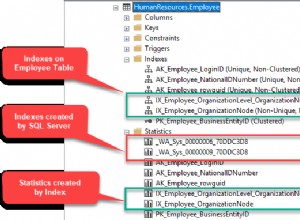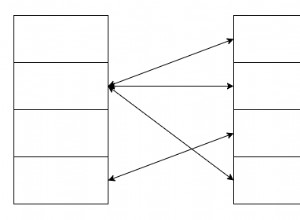Mam sugestię, której używam w mojej aplikacji. Możemy pobrać SQLException z PersistenceException . Następnie spróbuj uzyskać sql error code dla SQLException . Jeśli Twoim wymaganiem jest uzyskanie sql error code , możesz podążać za moim przykładem;
public void insert(Group group) throws DAOException {
try {
//your operation
em.flush();
logger.debug("insert() method has been successfully finisehd.");
} catch (PersistenceException pe) {
String sqlErroCode = getErrorCode(pe);
// do your operation based on sql errocode
}
}
protected String getErrorCode(RuntimeException e) {
Throwable throwable = e;
while (throwable != null && !(throwable instanceof SQLException)) {
throwable = throwable.getCause();
}
if (throwable instanceof SQLException) {
Properties properties = --> load sql error code form configuration file.
SQLException sqlex = (SQLException) throwable;
String errorCode = properties.getProperty(sqlex.getErrorCode() + "");
return errorCode;
}
return "NONE";
}
Przykładowa konfiguracja kodu błędu mysql
mysql_error_code.properties
#MySQL Database
1062=DUPLICATE_KEY_FOUND
1216=CHILD_RECORD_FOUND
1217=PARENT_RECORD_NOT_FOUND
1048=NULL_VALUE_FOUND
1205=RECORD_HAS_BEEN_LOCKED




